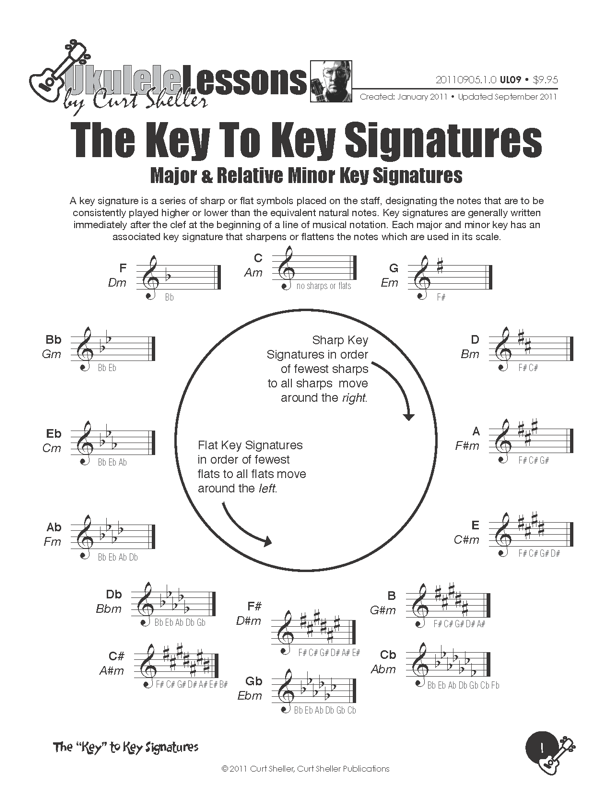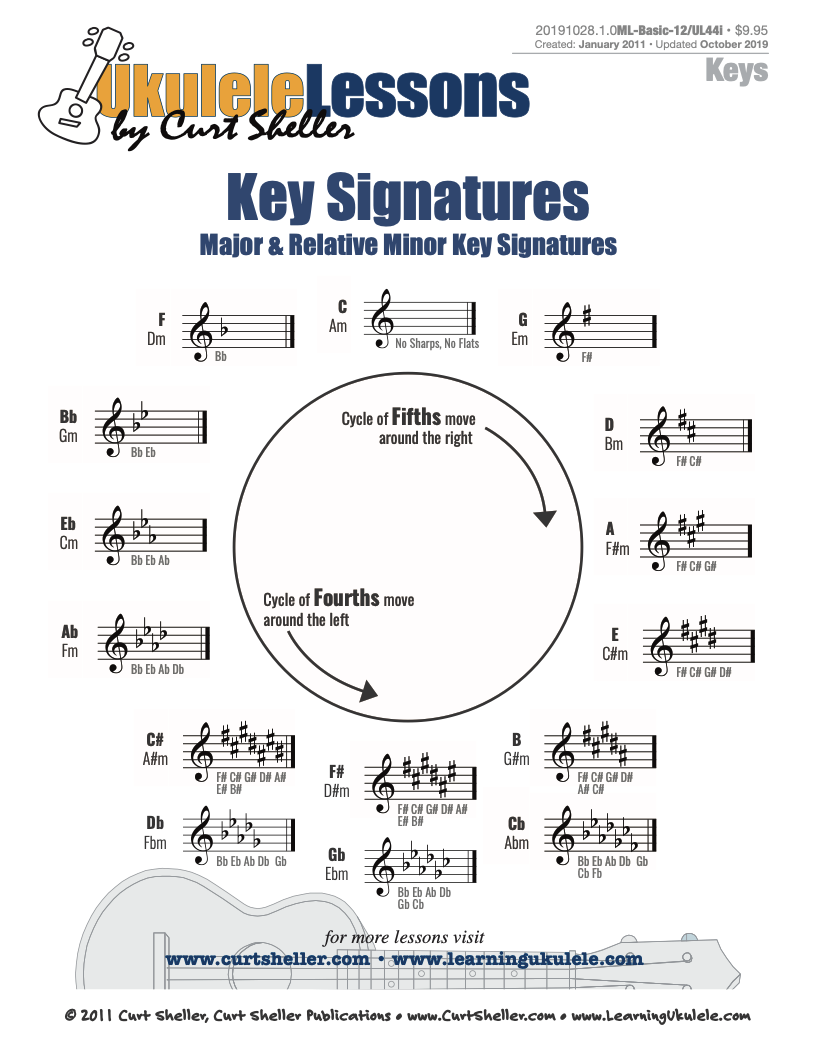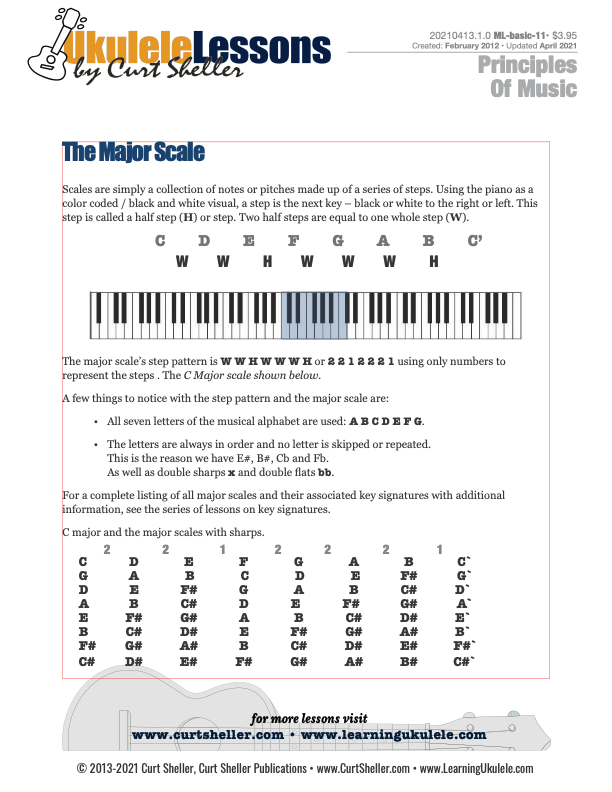A "Key Signature" is a series of sharp or flat symbols placed on the staff, designating the notes that are to be consistently played higher or lower than the equivalent natural notes. Key signatures are generally written immediately after the clef at the beginning of a line of musical notation. Each major and minor key has an associated key signature that sharpens or flattens the notes which are used in its scale.




A "Key Signature" is a series of sharp or flat symbols placed on the staff, designating the notes that are to be consistently played higher or lower than the equivalent natural notes. Key signatures are generally written immediately after the clef at the beginning of a line of musical notation. Each major and minor key has an associated key signature that sharpens or flattens the notes which are used in its scale.
Available for Premium Site Access Plans Only
In principle, any piece can be written with any key signature, using accidentals to correct any notes where it shouldn't apply. The purpose of the key signature is to minimize the number of such accidentals required to notate the music. The sequence of sharps or flats in key signatures is generally rigid in modern music notation. For example, if a key signature has only one sharp, it must be an F sharp.
The effect of a key signature continues throughout a piece or movement, unless explicitly canceled by another key signature. For example, if a five-sharp key signature is placed at the beginning of a piece, every A in the piece in any octave will be played as A sharp, unless preceded by an accidental.
- This Key Signature circle is sometimes called the circle or cycle of fifths or fourths.
- A sharp (♯) or flat is called an accidental.
- Accidentals are not mixed in the major or minor key signatures.
- Each successive key signature around the circle includes the previous key signature's accidentals.
- The last sharp (♯) in a key signature is the letter right before the name of the major key. Example: The last sharp (♯) in G major key signature is F. (A B C D E F G A). The last sharp in E major key signature is D. (A B C D E F G A B)
- The second to last flat (♭) for all flat keys except F is the key.
- The order of sharps (♯) move in Perfect Fifths . The order of flats (♭) in move in Perfect Fourths .
- The primary chords, the I , IV , and V chords of major keys are the chords to the left and right of the key signature. The IV chord is to the left along the circle and the chord is to the right along the circle.
A "Key Signature" is a series of sharp or flat symbols placed on the staff, designating the notes that are to be consistently played higher or lower than the equivalent natural notes. Key signatures are generally written immediately after the clef at the beginning of a line of musical notation. Each major and minor key has an associated key signature that sharpens or flattens the notes which are used in its scale.
Available for Premium Site Access Plans Only
In principle, any piece can be written with any key signature, using accidentals to correct any notes where it shouldn't apply. The purpose of the key signature is to minimize the number of such accidentals required to notate the music. The sequence of sharps or flats in key signatures is generally rigid in modern music notation. For example, if a key signature has only one sharp, it must be an F sharp.
The effect of a key signature continues throughout a piece or movement, unless explicitly canceled by another key signature. For example, if a five-sharp key signature is placed at the beginning of a piece, every A in the piece in any octave will be played as A sharp, unless preceded by an accidental.
- This Key Signature circle is sometimes called the circle or cycle of fifths or fourths.
- A sharp (♯) or flat is called an accidental.
- Accidentals are not mixed in the major or minor key signatures.
- Each successive key signature around the circle includes the previous key signature's accidentals.
- The last sharp (♯) in a key signature is the letter right before the name of the major key. Example: The last sharp (♯) in G major key signature is F. (A B C D E F G A). The last sharp in E major key signature is D. (A B C D E F G A B)
- The second to last flat (♭) for all flat keys except F is the key.
- The order of sharps (♯) move in Perfect Fifths . The order of flats (♭) in move in Perfect Fourths .
- The primary chords, the I , IV , and V chords of major keys are the chords to the left and right of the key signature. The IV chord is to the left along the circle and the chord is to the right along the circle.
Related Lessons, Videos, Lesson Series, Songs, Books & Reference Charts, Resources & Assets, Workshops are below.

Harmonic Analysis is the understanding of the functional sequence of chords. It is the process used to analyze the harmonic structure of a progression, song or composition. This analysis is then used to make scale selections for improvisation and chord substitution.


return in your investment)—it is this— learning the
f*ckingnotes of your OWN instrument. Sorry for the tough talks—but it is sooooo true!


Learn to read single note melodies in the first/open position is a lot easier than you might think. Book: Ukulele – Reading Music Series – Primer

An organized collection of daily practice and reference material for the contemporary ukulele player for developing the vocabulary and knowledge necessary for single note playing. Book: Daily Practice Material for the Contemporary Ukulele
Checkout the Books & Reference Charts for additional Handy, Dandy Reference Charts.

Ukulele Fingerboard Chart for C Tuning, Low or High G – G C E A

Ukulele Fingerboard Chart for G Tuning, Low or High A – D G B E

A handy reference chart of all 15 major and relative minor key signatures. US Letter 8.5 x 11 sized (ANSI-A) , A4






















.jpg)